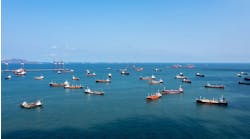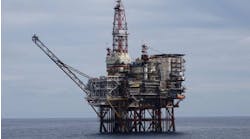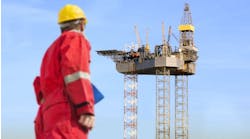Offshore staff
MONACO -- At the Deep Offshore Technology International conference, French robotics specialist Cybernetix reported on two offshore contracts, one in Norway and one Nigeria.
The company is close to completing a new Anchor Leg Load Monitoring System (ALLMS) for the mooring lines of the Skarv field FPSO’s internal turret. The equipment was commissioned by SBM in April for the BP Norge-operated project in the Norwegian Sea.
Cybernetix says it designed and developed ALLMS to strengthen its range of asset integrity monitoring solutions, and to suit SBM’s needs in mooring technology. A first set of ALLMS was delivered to SBM in 2008 for the deepwater Frade field offshore Brazil, and was deployed successfully and commissioned via remote control early this year.
The company also is preparing to integrate subsea equipment for a non-intrusive pressure and temperature monitoring system commissioned by Cameron GmbH. The subsea monitoring system will be applied to Total’s Usan project off the Nigerian coast, in a water depth of nearly 1,000 m (3,281 ft).
The global surveillance system includes more than 50 measurement points integrated throughout the entire subsea production network. Among other things, it aims to help prevent hydrate formation in flowlines which are subject to high pressures and low temperatures. This new contract will be followed by an installation and commissioning agreement. Equipment should be delivered at year-end.
One of the company’s longest ongoing developments is its Swimmer underwater vehicle. Swimmer can support deepwater and arctic operations, generating substantial savings, the company claims, through its ability to stay underwater for weeks to perform Inspection, Maintenance and Repair tasks (IMR) on increasingly complex subsea production systems.
Currently Cybernetix focuses on qualifying the system's key technological modules, and assessing their reliability and performance. The main objective, it adds, is a cost-efficient and flexible resident robotic system able to operate in hostile environments without the need for dedicated support vessel assistance.
This year, the company has performed technical and economic pre-project studies with Total E&P for a probable application on one of Total’s deepwater projects. Field implementation and commissioning of the system are under consideration for 2012. Cybernetix expects to perform joint Swimmer-based IMR services with Oceaneering via an Integrated Services Team.
11/04/2009


